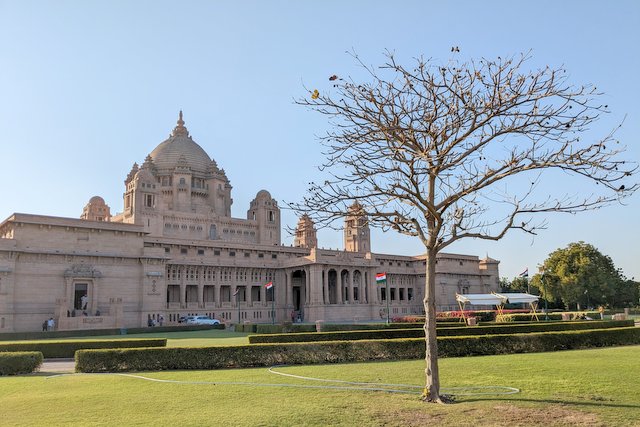I always look forward to travelling in Rajasthan for the love of its food, language, music, enterprising people and ‘dhora’ or sand dunes. Jodhpur had been on my travel list for a long time.
The best part of flying to Jodhpur is that the airport is very close to the city centre, thanks to Maharaja Umaid Singh. I did not see sand dunes from the window seat, but it was fun spotting the fort and the palace from the plane.
We had enough time on the day we landed to explore Umaid Bhawan Palace museum which closes by 5pm. It was good to find it open for visitors on republic day. In Jodhpur, we mostly used auto-rickshaws and Uber when available.
Brief History of Jodhpur
It is said that, in the 15th century, Rao Jodha founded Jodhpur and his son Rao Bika founded Bikaner on the advice of sage Bhagwati Karniji, also known as Karni mata.
The foundation stone of Mehrangarh fort was laid on an isolated rock in 1459. Foundation of Junagarh fort of Bikaner was laid in the barren wilderness called Jangaldesh in 1488.
Karni mata used her influence to unite different clans and bring stability in the times of utter chaos in Rajasthan. On multiple occasions, I have prayed in Karni mata temple in Deshnoke without knowing that she played a major role in shaping Rajasthan’s history.
Places to See in Jodhpur
Umaid Bhawan Palace
Built 80 years ago, it is one of the largest palaces in the world and most popular highlight of Jodhpur. A relatively small section of the palace is converted into a museum which has a dedicated entrance.
H.H Gaj Singh II, who is the 39th generation of Rathore dynasty, and his immediate family live in one wing. The other wing is a luxury hotel. This ornate palace is a beautiful blend of Indian and European architecture.
It is said that this luxurious private residence with 347 rooms was built to provide gainful employment to people of Jodhpur over 15 years, as a part of drought relief measures.
The main hall has an exhibition on the making of the palace, the royal family’s interests and contributions.
Murals of Umaid Palace
As you enter, you notice a massive mural high up on the concave wall below the dome and another one diametrically opposite, behind you. The former is a scene from the victory of General Durgadas Rathore’s army in the battle against Aurangzeb’s army, with Mehrangarh fort in the background. The latter is a scene from the wedding procession of…
Click Here to Read the Full Original Article at Inditales…
